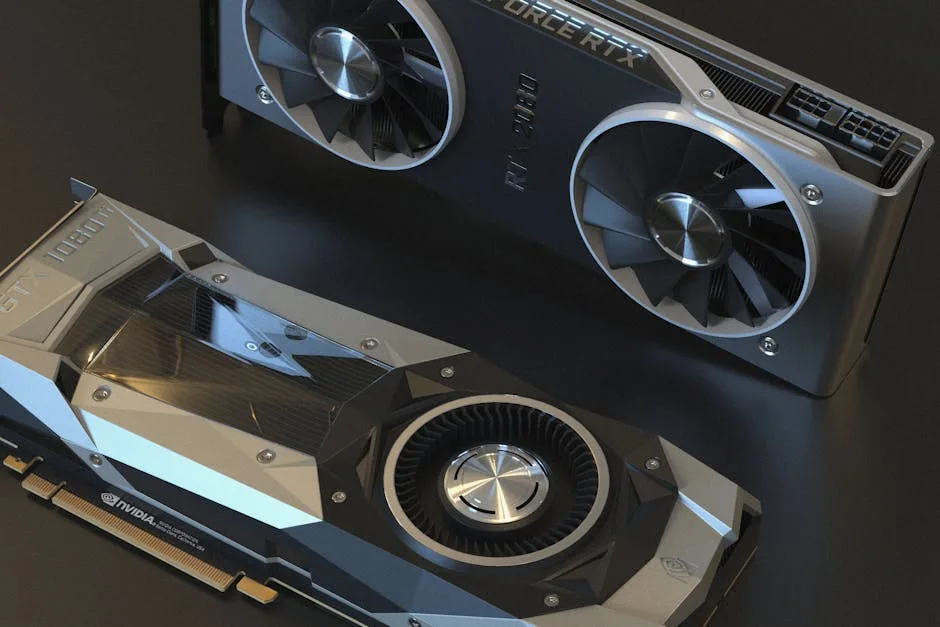
The geopolitical landscape of artificial intelligence technology is shifting rapidly, with Nvidia Corporation at the center of a complex negotiation between commercial interests and national security concerns. According to recent reports, Nvidia is developing new AI chips specifically designed for the Chinese market while simultaneously winding down production of an earlier chip it sold to Chinese companies1. Chief Executive Jensen Huang confirmed that the new chip would be tailored for AI data centers, representing a strategic effort to maintain market presence while complying with evolving U.S. export restrictions1.
This development occurs against the backdrop of an unprecedented proposed arrangement between the U.S. government and semiconductor companies. The Trump administration has negotiated a deal that would allow resumed sales of certain chips to China in exchange for 15% of the revenue from those sales being paid to the U.S. government2. President Trump reportedly initially asked for a 20% cut but negotiated down to 15% with Nvidia CEO Jensen Huang2. This revenue-sharing model represents a significant departure from traditional export control mechanisms and has drawn bipartisan criticism from legislators who argue it undermines existing export control laws3.
Technical Specifications of the New China-Specific Chips
Nvidia’s approach involves developing multiple chips with carefully calibrated performance characteristics designed to comply with U.S. restrictions while remaining competitive in the Chinese market. The flagship effort is the B30A, a Blackwell-based chip designed to be more powerful than the current H20 but less capable than the flagship B3001. This single-die architecture targets approximately half the raw computing power of the B300 while retaining high-bandwidth memory and NVLink technology1. The specifications are not yet finalized, but Nvidia aims to deliver samples to Chinese clients as early as September 2025, pending U.S. government approval1.
A second chip, the RTX6000D, is designed primarily for AI inference tasks rather than training1. This weaker chip is explicitly engineered to fall under U.S. performance thresholds, using conventional GDDR memory with a bandwidth of 1,398 GB/s—just below the 1.4 TB/s cap set in April 2025 restrictions1. Expected to be cheaper than the H20, the RTX6000D represents Nvidia’s effort to address different market segments within China’s AI ecosystem. The company plans to ship small batches to Chinese clients starting in September 20251.
Market Dynamics and Competitive Pressures
The commercial imperative for Nvidia is substantial, as China represented approximately 13% of the company’s revenue last fiscal year4. The semiconductor manufacturer is racing to retain market share and prevent Chinese clients from fully switching to domestic alternatives, primarily Huawei4. Analysis confirms that Huawei’s Ascend chips are achieving parity in some raw computing metrics but still lag critically due to software ecosystem limitations and manufacturing constraints4. The Chinese government has mandated that publicly funded AI data centers use at least 50% domestic chips to reduce foreign dependence, a policy that began in Shanghai and has now expanded nationwide4.
Adding complexity to Nvidia’s position in the Chinese market, state media has alleged that the company’s chips pose security risks, and regulators have cautioned tech firms against purchasing the H205. Nvidia has consistently denied these allegations, but the warnings reflect the increasingly fraught relationship between U.S. technology providers and Chinese consumers amid broader geopolitical tensions5. These developments create a challenging environment for multinational technology companies operating in sensitive sectors.
Legal and Policy Implications
The revenue-sharing arrangement between Nvidia, AMD, and the U.S. government represents a highly unusual approach to export control policy3. The legality of this model is debated among policy experts: it could be viewed as an unconstitutional tax on exports or a permissible regulatory fee under the Export Control Reform Act3. Commerce Secretary Howard Lutnick acknowledged Nvidia’s lobbying efforts, stating, “Of course [CEO Jensen Huang] would like to sell a new chip to China… I’m sure he’s pitching the president all the time”2.
This arrangement could set a global precedent, leading to a more fragmented and costly global AI supply chain if other countries adopt similar measures3. The deal effectively creates an approved “licensing corridor” for three Nvidia chips: the H20 (current), the B30A (pending), and the RTX6000D (inference), all subject to performance caps, audits, and the revenue-sharing requirement2. This represents a pragmatic compromise between complete restriction and unfettered access, but its long-term viability remains uncertain given political opposition.
Technical Implementation Challenges
The transition from Nvidia’s ecosystem to domestic alternatives presents significant technical challenges for Chinese AI data centers. Reports emphasize the difficulty in moving from Nvidia GPUs to Huawei products, primarily due to the entrenched CUDA software ecosystem5. Nvidia’s CUDA platform remains dominant and essential for running existing AI models, while transitioning to Huawei’s CANN platform is described as being “full of headaches” for data center operators4. This software dependency creates a substantial barrier to adoption of domestic alternatives, even when hardware specifications appear competitive.
Huawei faces additional constraints due to manufacturing limitations. The company’s chips are limited to a 7-nanometer process due to U.S. sanctions blocking access to advanced EUV equipment, which constrains their performance potential compared to cutting-edge alternatives4. This manufacturing gap creates an opportunity for Nvidia to offer products that exceed domestic capabilities while remaining within export control limits, though the company must carefully balance performance to avoid violating restrictions.
Strategic Implications and Future Outlook
Nvidia’s development of China-specific chips represents a sophisticated response to complex regulatory constraints. The company’s official statement reflects this careful positioning: “We evaluate a variety of products for our roadmap, so that we can be prepared to compete to the extent that governments allow. Everything we offer is with the full approval of the applicable authorities and designed solely for beneficial commercial use”2. This approach allows Nvidia to maintain revenue from the Chinese market while demonstrating compliance with U.S. national security objectives.
The September 2025 timeline for delivering samples of the B30A to Chinese clients suggests that both technical development and regulatory approval processes will extend over the coming year5. This timeline provides opportunity for further policy evolution, particularly given the bipartisan criticism of the current arrangement and potential changes in administrative approach. The ongoing tension between commercial interests and national security concerns ensures that Nvidia’s strategy will continue to evolve in response to regulatory developments.
The development of specialized chips for constrained markets represents a new paradigm in technology export control compliance. Rather than simply restricting sales of existing products, companies are now engineering specifically limited versions for regulated markets. This approach requires significant investment in research and development but may become increasingly common as geopolitical tensions continue to influence technology markets. The success of this strategy will depend on maintaining a technical advantage over domestic alternatives while remaining within increasingly sophisticated regulatory parameters.






